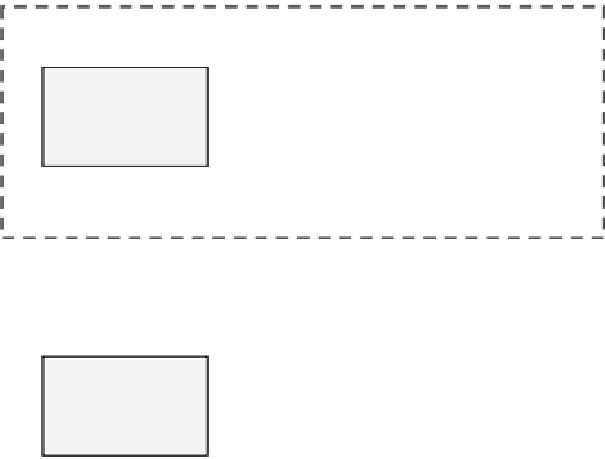Environmental Engineering Reference
In-Depth Information
RELATIONSHIPS AT LOCAL SCALE (GROUNDWATER
DOMINATED)
Groundwater-
induced surface
flooding
Groundwater-
induced
waterlogging
Regional connectivity
Ponding
Fluvial flooding
RELATIONSHIPS AT LOCAL SCALE (FLUVIALLY
DOMINATED)
Fig. 22.4
Interrelationship between flood
mechanisms at local and regional scales.
conveyance of both surface water (groundwater-
induced) and fluvial (out-of-bank) floodwaters. In
the lower R´o Salado (Region B), topographic con-
strictions on the channel formed by relic aeolian
ridges separating deflation hollows are particular-
ly strong and come into operation earlier in the
flooding process, limiting the egress of water from
the channel, causing important backwater effects
and delaying the downstreamconveyance of flood-
waters. Figure 22.6 shows a satellite image of the
lower reach of the R´o Salado and a typical cross-
section featuring a topographic constriction.
Groundwater-induced surface flooding is a di-
rect result of interaction between the regional
hydrogeological system and microforms in the
surface relief. For regional hydrogeological pur-
poses, the system can be considered as uncon-
fined, with its base defined at the top of the
Parana Formation. Apart from the fringing moun-
tain and hill areas at the boundaries of the basin,
groundwater gradients are very gentle, with a re-
gional flow from west to east. The ubiquitous
presence of wetlands and lakes (progressively in-
creasing in frequency from west to east), is dictat-
ed by the very gentle topographical gradient and
very shallow unsaturated zone, and indicates that
the groundwater regime is closely coupled with,
and constrained by, the surface water regime.
Geomorphologically, a feature of the basin is the
lack of natural channels acting as tributaries to the
principal rivers and arroyos. This shows that a
conventional surface water drainage system with
significant direct runoff from rainfall is not dom-
inant in the Northwest (Region A).
Because of the shallowdepth of the unsaturated
zone, the water table is directly subject to evapo-
transpiration. When major recharge events occur,
normal evapotranspirational losses are overtaken,
heads rise rapidly and exfiltration takes place,
giving rise to flooding and the subsequent creation
of non-perennial surface water bodies and areal
extension of perennial lakes. Depending upon
their connectivity (controlled by topographic
thresholds such as dune crests) and the amount
of exfiltration, these lakes can join to form cas-
cades and major groundwater-induced flooding
can ensue. Consequently, surface flooding in-
duced by seasonal and event-driven accumulation
of groundwater is a transient phenomenon. Dur-
ing dry periods the groundwater system is local-
ized, with recharge being largely balanced by
evapotranspiration, resulting in limited lateral
groundwater contributions to regional runoff. The
result is that regional runoff is relatively small,






